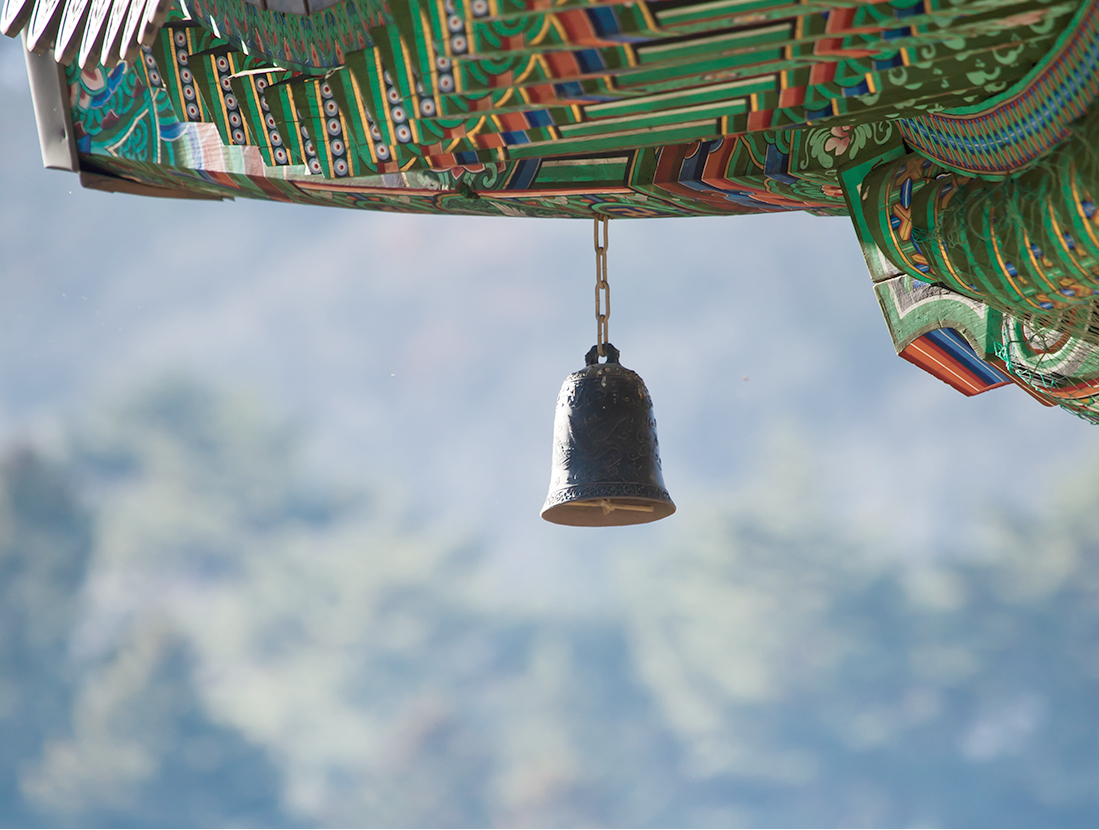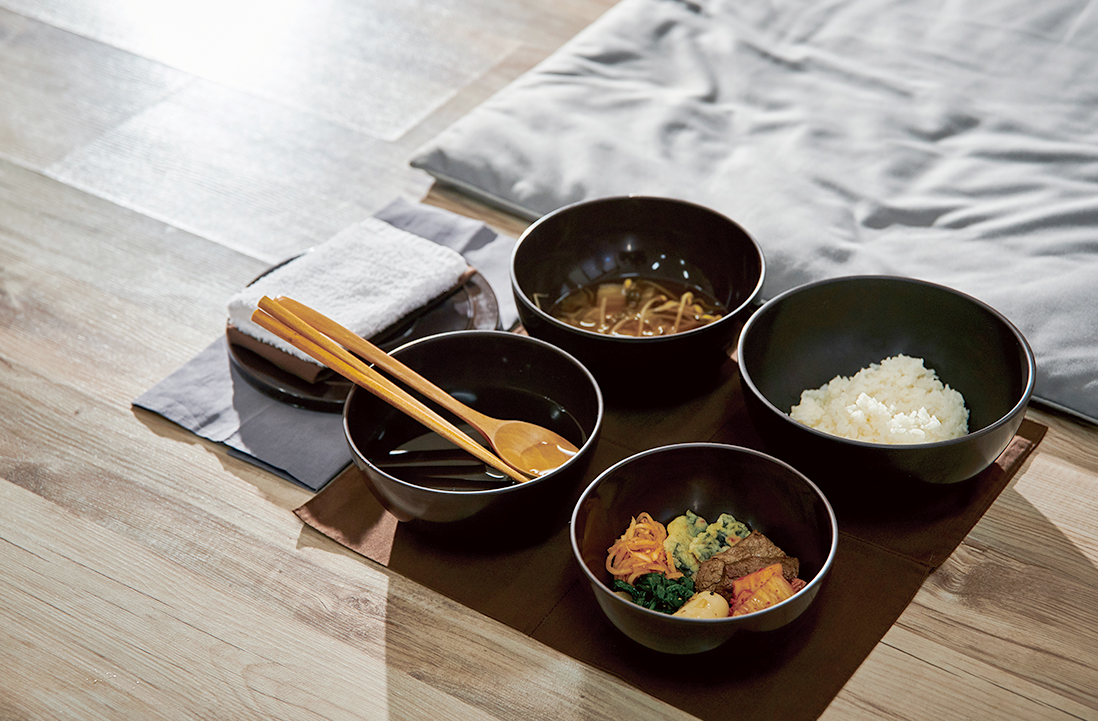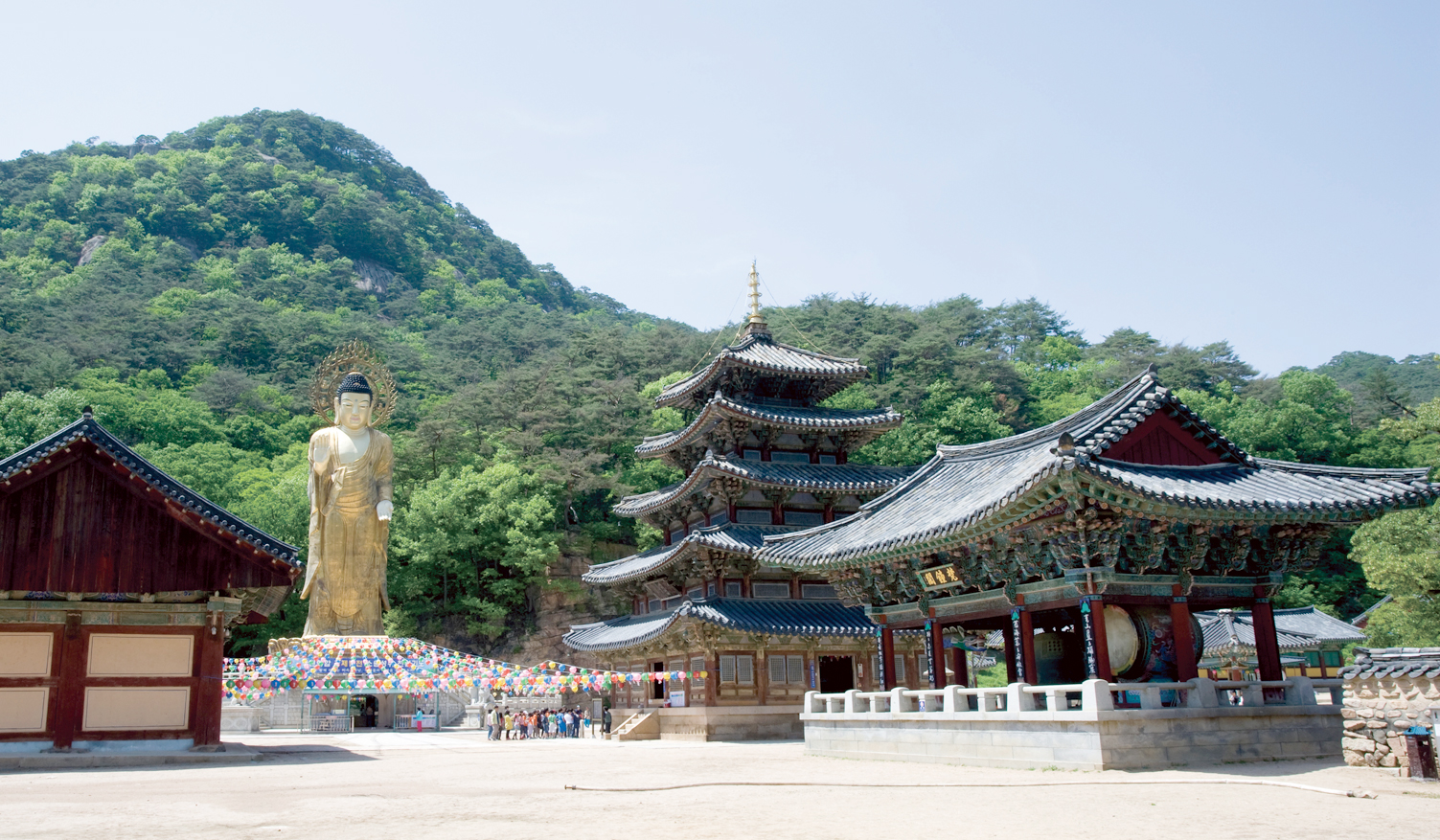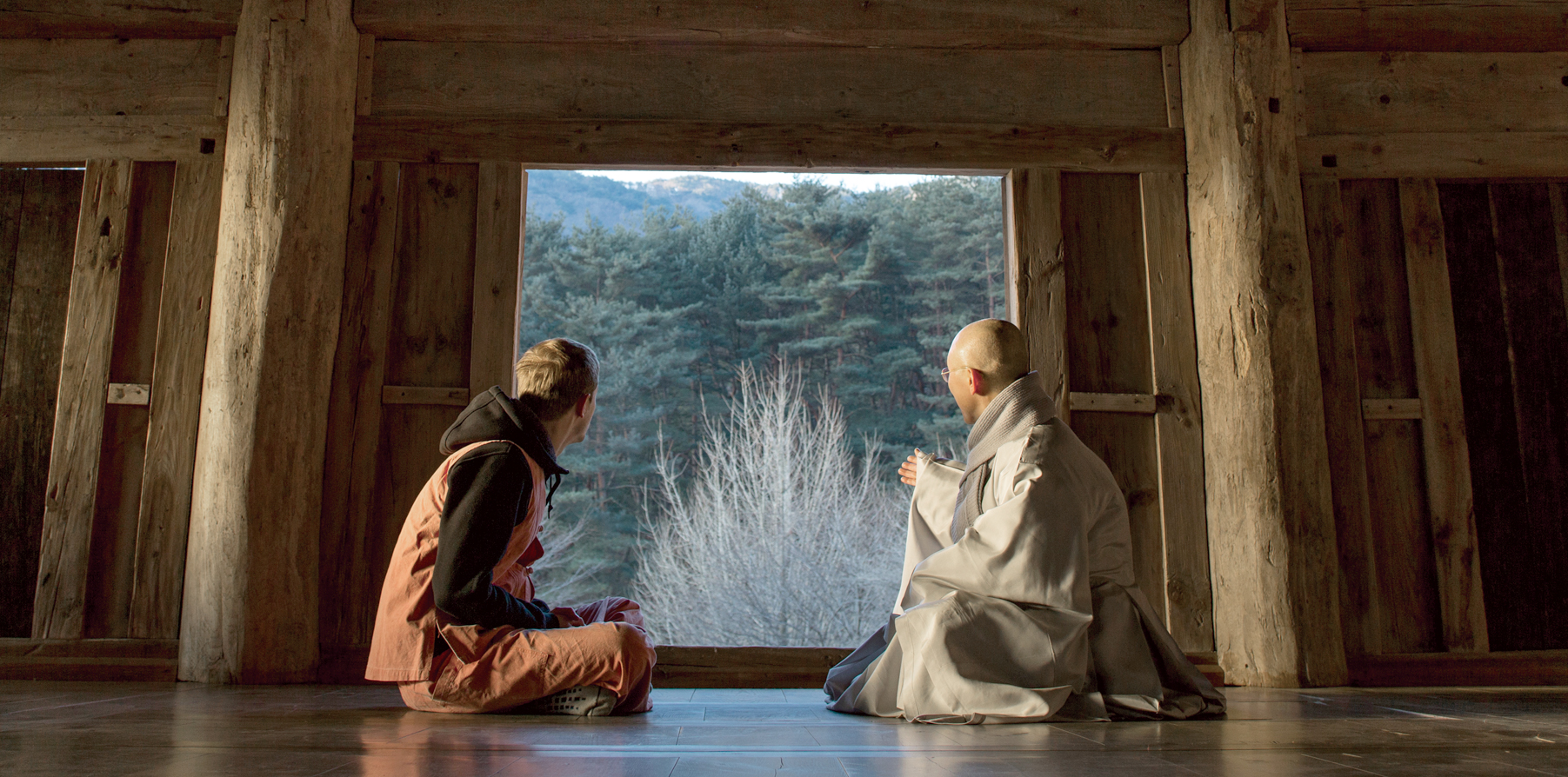Culture Vulture
Relaxing Retreat
Nurturing Mind & Body
Exploring Korean temples is one of the most worthwhile activities in Korea even if you have a passing interest in the nation’s past, and especially if you have no appetite for ponderous history tomes and dry textbooks.
Written by • Tim Alper
Bright, hyperreal tigers with playful faces and muscles tensed and ready to pounce. Fish-shaped wind chimes tinkling with every gust of wind that blows through. Sloping, wing-tipped roofs decorated with ornate gold-eyed dragons.
No, this is not a scene from “Alice in Wonderland” or a park full of installation art. These are scenes at a Korean Buddhist temple.
Curious-minded travelers will quickly notice that barring a few larger exceptions, the vast majority of Korean temples are quite hard to get to, often found at the end of tough mountain trekking trails beside small, babbling streams. Often, they are a good hour or more from the nearest high street, bus stop or car park.
The next thing you will likely notice about Korean temples is that they are almost all bathed in rich colors. While modern Korean cities are full of whitewashed apartment blocks or concrete grey and clear-glass office buildings, a Korean temple is always awash with lively hues like vivid olive greens and deep-red wood.

Cozy temples let participants soak up the breeze and bask in nature. © imagetoday
And while Confucian schools and shrines are austere looking and plain in contrast, temples are usually decorated with ornamental details and painted with picturesque scenes from the tales of Buddha. The four guardian kings who stand at temple entrances usually look positively jubilant, with large expressive faces, garish crowns and a range of props.
All of this speaks volumes about the seismic philosophical and theological shifts that have left indelible marks on Korea, its architecture and its culture.
Touch of Color

Temple food offers modest yet a refined and unique cuisine. © imagetoday
The Buddhist temple’s heyday on the Korean Peninsula was the Goryeo Dynasty (918-1392). Goryeo monarchs were devoutly Buddhist but shunned ascetic, cerebral forms of worship. Their temples were instead adorned with lush, colorful artwork that the village folk — then almost entirely illiterate — could use to understand the fundamentals of the religion.
Every building exterior told a story, usually illustrating how Buddha was born to his mother Maya or how a young Buddha found enlightenment.
These picture stories were designed to be relatable. They featured animals that the peasantry lived alongside, from the mountain tigers that terrorized their flocks to farm animals they could not live without such as chickens and oxen.
The “Water-Moon Avalokiteśvara,” a painting now housed at New York’s Metropolitan Museum of Art that dates back to the first half of the 14th century, speaks volumes about the Goryeo take on Buddhism. Its central figure is a seated bodhisattva, adorned with bright jewelry and dressed in radiant, flowing robes in showing Buddhism in all its glory.
The Joseon Dynasty seized power in 1392 and ruled right up until the end of the 19th century. This dynasty had strict Confucianists and nothing but contempt for Buddhism. The religion was far too popular to be outlawed under Joseon rule, but it was marginalized.
As such, Goryeo-era Buddhist clergy had little choice but to take their faith, artisan skills and what meager possessions they were allowed to take with them up into the hills, far from the prying eyes of the nobility. They continued to paint their temples in the old Goryeo style, which has survived into the modern era.
But if you dig a little deeper, you will find stories even older than these.
Ancient Roots
Buddhism in Korea predates the Goryeo monarchs by several centuries. Back in the fourth century, the Goguryeo Kingdom became the first on the peninsula to officially adopt Buddhism. It integrated the new faith with the prehistoric Korean belief system of reverence for the supernatural powers of mythical animals, including snow-white tigers, vermillion bird-like creatures and roaring dragons.
The neighboring Silla Kingdom adopted Buddhism in the mid-500s to stunning effect. The Silla capital of Gyeongju (now in Gyeongsangbuk-do Province) is still a wonderland of Buddhist art. Surprisingly though, the best place to go in the city to understand the sheer scale of Silla-era Buddhist art is not a temple but a museum. Artifacts retrieved by archeologists and housed at the Gyeongju National Museum tell impressive tales.
Tiles made of brick used for flooring or roofing are all embossed with dynamiclooking Buddhist deities, intricate mandalas, blooming flowers and coiled dragons. It is clear that Silla temples were designed to have the same effect on visitors as the great Gothic cathedrals of 13th-century Europe. No one escapes Buddhist imagery at a Gyeongju temple, no matter where the eyes turn.

The Templestay program is especially popular among foreign tourists. © Cultural Corps of Korean Buddhism
Today, Buddhism in Korea has changed a lot. The Joseon era is long gone and Confucianism is no longer dominant. Buddhists are free to worship as they see fit, and a few newer temples have been built at lower elevations.
Korean Buddhism has not modernized per se but in keeping with the times, Buddhist TV channels and radio stations air prayers, documentaries and sermons.
Another modern innovation is a great hit among both the devout and the curious: the Templestay program. Participating temples allow guests to stay at temples for two days and one night, where they join monks or nuns as they go about their daily duties. The day typically involves pre-dawn prayer, sleeping in a traditional cell or dormitory and monastic dining rituals whereby meals must be consumed in complete silence.
For most, the highlight of the Templestay is a bowing ritual in which visitors join monks for a grueling set of 108 prostrations. This intense workout has been taken up by even non-Buddhists as an alternative to gym-based fitness programs.
Natural Delights

Temples of various sizes are an integral part of Korean history. © imagetoday
For me, a Korean temple’s true treasure is its natural surroundings. Most are built on the slopes of stony mountains where modern developers would not dare construct 21st-century amenities. Courtyards often feature centuries-old trees that are as much of a centerpiece as any of the pagodas or shrines.
Even bigger temples like Bongeunsa in Seoul’s busy Gangnam district are often surrounded by a small belt of trees and tiny networks of walking paths that allow an escape from city life for a short while.
Deeper into the countryside on an early morning, you are often alone at a Korean temple, with only the gentle murmur of chants in monastic prayer halls interrupting the songs of birds and the buzzing of winged insects.
And after twilight on windless nights, when even the thrushes and bees have fallen silent and the monks are asleep, you can look out on silent courtyards bathed in moonlight and take in the delectable sound of total silence.



















